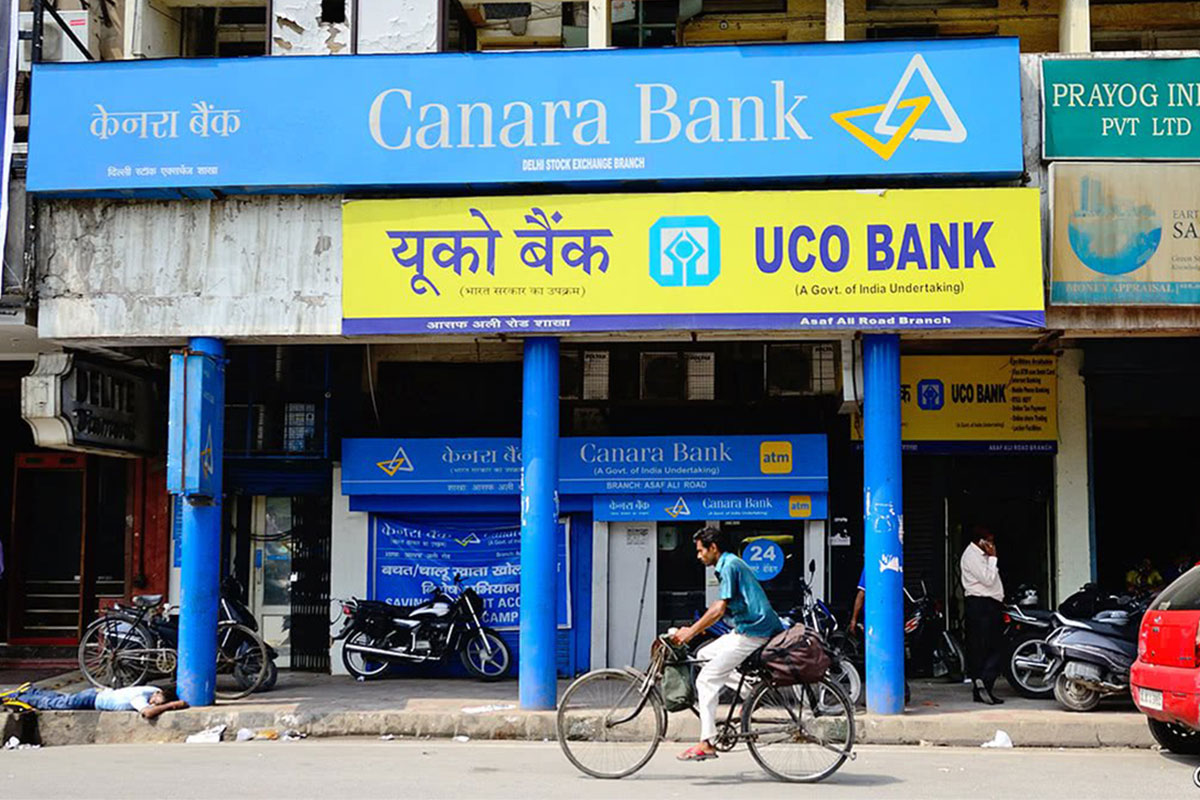The crisis in the Indian banking sector has led to calls for the privatization of public sector banks (PSB). However, the private sector is no paragon of virtue. Moreover, the faithful advocates of privatization are illinformed about real issues. The vast crowds that throng PSBs and put up with various inconveniences indicate the enormous faith that they have in these banks. Today’s challenge does not involve providing ultra-sophisticated banking to the 10 per cent upper crust. Instead, the true challenge is to provide essential financial services to India’s 90 per cent, who may not be the source of significant revenue for banks.
Did you know that almost all government pensioners bank exclusively with public banks? It is true that India’s public sector banking seems genuinely out of control and suffers from flawed decision-making and poor governance, but unless we understand the pathology of the present crisis, we may not be able to come up with meaningful solutions. We should never forget the role PSBs have played in financial inclusion.
Advertisement
These banks have been the backbone of the socioeconomic agenda of the government. In a rural area, the role of a PSB is not confined to banking. It also encompasses a more holistic developmental agenda. PSBs are the one-stop shop for all financial needs of the rural populace, including insurance, financial literacy, remittance and receipt of welfare subsidies and grants, amongst others.
The government’s socioeconomic programmes must use the banking conduit to move funds. Those espousing privatisation should visit the remote branches of public banks, where managers live at significant risk to lives and are mentoring the local population in financial, technical, business and agricultural literacy. The social banking revolution that followed the nationalization of banks in 1969 certainly helped banking expand its outreach. Post 1969, the government launched an ambitious social banking programme which sought to improve access of the rural poor to formal credit and saving opportunities.
The programme ended in 1990. Between 1969 and 1990, bank branches were opened in roughly 30,000 rural locations with no prior traditional credit and savings institutions. The figure rose from 8,261 in 1969 to a whopping 65,521 in 2000. The share of households accessing institutional credit rose from 32 to 61.2 per cent between 1971 and 1981.
Public banks revolutionized rural India in the social banking era of the 1970s. The expansion of bank branches in rural areas was particularly noteworthy. It was this emphasis on those excluded from the formal financial stream that led to a slew of measures in the field of finance and drove so many bankers into the arena of the battle against poverty. State-owned banks in developing countries have an essential socio-economic objective ~ to meet needs of the most vulnerable sections of the economy.
Though state and private sector banks must lend 40 per cent of their loanable funds to the priority sector at a concessional rate, the main burden of the government’s development policies ~ from rural lending to infrastructure development ~ falls on state-run banks. Our banking policies allow specific bypass routes for banks to achieve their priority lending targets through bond investments, which can be classified under priority-sector lending. Most private banks have resorted to buying these bonds to avoid borrowing in mandated sectors that are now contaminated with a sick credit culture.
It was in the mid-1990s that banking changed course and lost its appetite for rural pastures. The main reason was the bloating mountain of dud loans that had to be ploughed by bankers. India’s pile of soured loans, whose value degrades like an unstable isotope, is a classic example of how politically influential tycoons undermine the rules to secure credit and then default on it. The enormous losses posted by banks and the desperate attempts by the government to detoxify balance sheets shows how difficult it is for rescue plans to deliver. When borrowers become insolvent, their loans are added to an existing mountain of debt.
Banks must make heavy writedowns each time it happens, ultimately choking the credit line. To keep these banks going, the government has to inject capital into them regularly The world’s great philanthropist and investment leader, Warren Buffett, once said, “It’s only when the tide goes out that you realize who has been swimming naked”. The naked were caught disrobed when the banking system hit the rocks, and the tide turned.
Similarly, sometimes it takes a pitch-black economy to reveal who and what in the financial firmament shine. It is only when darkness falls that one can see the stars twinkle. The moonlight from the otherwise bleak sky of the financial world has been made possible thanks to honest taxpayers, who are transfusing precious blood to bleeding banks. Most big defaulters have the money to employ legal experts who can play the judicial system ~ it is here that the law flounders. India has some of the most draconian laws, which are ineffective against mighty dodgers.
We keep producing new regulations when the existing ones are adequate and need more teeth to obtain results. We show such promptness in condemning waivers for poor farmers, but we lack the courage to tame the big fish because they have enormous clout. Politicians are equally guilty of undermining the integrity of banks. They stacked the decks with populist sops using banks as spigots for burnishing election credentials.
This was apart from the vast loans they forced banks to shovel to their buddies. In India, the proportion of dodgy loans involving the borrower not making interest payments or repaying any principal has surged to the highest level among the world’s largest economies. The question is ~ why should ordinary people bear the burden of the fat cats? These freeloaders are gleefully and remorselessly winnowing scarce bank capital.
The government has to goose these banks with sprucedup flat sheets to make them lend again. Ironically, instead of being chastised, they are lauded as captains of the industry and adorn glorious positions in industry associations. Banks are known to become aggressive in turning mortgage defaulters to the streets. Scores of indebted farmers are tying the noose out of sheer humiliation. Then there is a class of salaried people who rarely default but are chased down for small unpaid debts.
The bankers seem to be helpless regarding the malfeasant promoters of big businesses. Scammers and swindlers have outfoxed the system. State institutions, such as regulators, bankruptcy procedures and courts, bolster the bank’s safeguard systems. But what finally underpins the security of the whole ecosystem is trust. The Reserve Bank of India (RBI) no longer appears to be the financial seer that was lionized for insulating the domestic economy from the economic turmoil of 2008.
Banks’ NPAs rose from Rs 2.6 lakh crore in 2013–14 to an estimated Rs 10 lakh crore in March 2018. Lack of capital, in turn, has caused loan growth at PSBs to slow down, impacting overall commercial bank credit growth. General bank credit since 2014–15 has grown at an average rate of 9.6 per cent, compared to an average increase of 16.6 per cent in the preceding four years. In 2017–18, overall bank credit grew at 10.4 per cent, with PSB credit growing at 6.3 per cent and private bank credit at 21.3 per cent.
(The writer is an author, researcher and development professional. He can be reached at moinqazi123@gmail.com)











